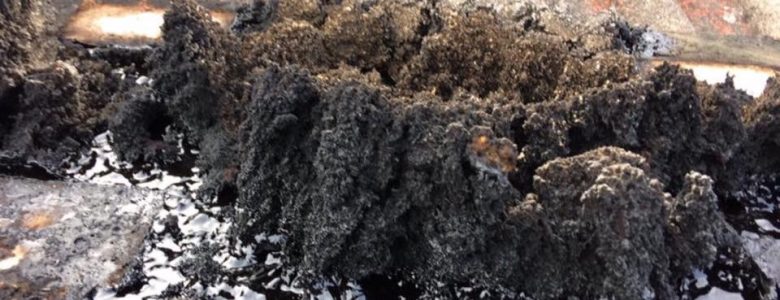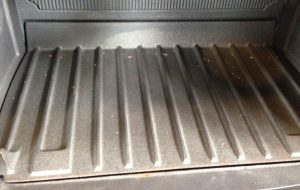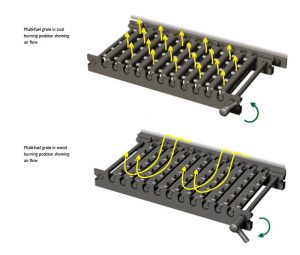Hello fellow chimney professionals
Todays blog is a really important one about the differences between a wood only appliance and a multi fuel version. It covers what you need to know and what to teach your customer.
I wrote this article after speaking to many customers over many years who insist that it is the right thing to burn wood of an evening and then add coal before bed, close down the air and slumber the appliance overnight, or to burn coal and then throw on a log when they want more flame picture.
So why is mixing fuels a problem?
Wood and coal burn quite differently, wood burns through a process of gasification where the volatile oils within become heated, turn to a gas, mix with oxygen above the log and eventually combust.
Coal on the other hand is primarily a carbon burn where oxygen must enter and mix from below the fuel as combustion takes place inside and not above the coal itself.
The differences between the two types of appliances
Wood only appliances
Typically wood only appliances have only one air control, this will allow to enter the stove, preheat in a chamber or baffle, it will then be directed above the log where the volatile hydrocarbons are mixed with the intake of oxygen vigorously before combusting, heating more intake air and eventually up and out of the chimney.
Multi Fuel Appliances
A typical multi fuel stove will have two air intakes one situated at high level to accommodate the gaseous burn of wood and one below a riddling grade to accommodate low level combustion air for coal.
Why is it foolhardy to burn both fuel types together?
Scenario one wood on top of coal
If we try to burn wood above a bed of coal we will need to open the top air intake drawing air above the coal and not through it. When this happens the coal which is burning poorly produces high levels of carbon monoxide and carbon dioxide, in doing so our wood gasses which should be bathed in oxygen are now shrouded in the same fire suppressant that is in the black fire extinguishers. The affect is compounded by the adequate heat from the coal, what happens is that the wood pyrolysis in the heat, volatiles hydrocarbons are emitted and become gaseous. Normally these hot gasses mix with oxygen and burn with the yellow flame we associate with wood however in the reduced oxygen environment above a coal bed the volatile gas emitted by the wood log will travel into the chimney where it will deposit as flammable creosote. The final issue when combustion temperatures and oxygen levels are too low is the later hotter stages of gaseous combustion will not effectively take place. During these later phases carbon soot particles should be burned, if they are not they will exit the chimney as fine dust pollution harming our air quality and shortening our lives.
Scenario two coal on top of wood.
We now understand that coal requires oxygen from below to burn effectively, think bellows in a foundry. If we burn wood below a coal bed we will have a situation where our coal is bathed in carbon dioxide leaving an incomplete burn. The second issue here is that wood produces lots of ash which in turn blocks the riddle grate further lowering the amount of available oxygen to the coal. If the coal used is smokeless coal then high levels of sulphurous compounds will also be emitted, these compounds are highly corrosive and will eat through stainless steel liners in no time. The one exception to the wood underneath coal scenario is kindling a fire with wood where it is very likely that the air intakes or even the door will be open in order to provide enough oxygen for both fuels for a limited time.
Historically blacksmiths used a belows to pump air below the coal. Nowadays they inject neat oxygen or us a pumped fan.
Appliance controls
After reading the above you will likely see the insanity of using both air controls at the same time while mixing different fuels. The appliance is very unlikely to have been designed to have both air controls open at once. E.g. If we have the wood air control open while burning coal air will be drawn in above where it needs to be which is below the grate as such the coal will never burn efficiently if at all.
What typically needs to happen is to use only one control at a time while the other remains closed, this ensures that combustion air is drawn in at the right place for a given fuels needs. I am sure you have likely juggled both controls with both fuel types at some time as we all have with varied results.
Grate design
A coal or smokeless coal Grate will be designed with fingers or large holes which allow air to enter from below. These often have a griddle system which allows the removal of ash that will block the path of oxygen to the fuel if left.
A typical wood only Grate will be flat with no holes below, it may even Consist of fire clays that are solid. It is normal for wood to burn on a bed of ash, the ash acts as an insulator protecting the base and also controls the rate of combustion by not exposing the entire log to oxygen and heat at the same time.
Conclusion
The biggest cause of chimney fire by a country mile is the way that the consumer uses their appliance. It is impertitive to ingrain good burning practices. This information is not openly available and as such we; that is the chimney professionals have an obligation to both learn and impart this knowledge on our clients so that they are burning safely, efficiently and not unnecessarily harming our environment.
Multi fuel stoves are designed to burn wood and coal/ smokeless coal just not at the same time. A wood only appliance is just that and must never be used to burn coal.
Thanks for reading I hope you have enjoyed and maybe learned a little too. Please be so kind as to like, share and feel free to comment
kindest regards
Daniel Hodgson
master chimney sweep









Barbara painter
Very informative ….pleased you posted this. ..
John
Thank you. I am going to change my wood and coal burning practice. I found your site through a link on ‘bike rides’ video.
Edwina Litherland
This was very informative. I have never used a wood burning or coal burning stove and have been considering installing a multifuel stove. Wow, It can be so scarey!. Truly appreciate your blog.